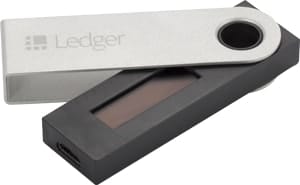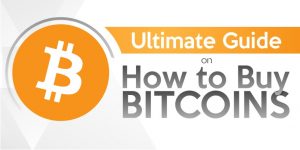The Ultimate Guide on How to Buy Bitcoin
You’ve probably been made enthusiastic about all the good news surrounding bitcoin lately, with its meteoric rise (and occasional shocking plummet) having you daydream about all the cool stuff a smart investment at the right time could buy. Though we’re no investment gurus here at CommQueR.com, we’re always more than happy to show people the different options they have on how to buy bitcoin.
There is more than one way to buy digital currency — there’s far more out there than just bitcoin, of course — but all of them have one thing in common: you never quite know what you’re buying. Cryptocurrencies aren’t backed by anyone, meaning the bottom could fall out of any of them at any time, leaving you with some worthless code on your hard drive.
That said, as with any investment, there is a risk versus reward scenario and maybe we’re just overcautious with our stock options meticulously recorded in our best accounting software. There are plenty of people right now making a fortune buying and selling bitcoin and we hope our readers join those ranks. Let’s get started.
Getting Ready

Besides a computer and an internet connection, you don’t really need much to buy bitcoin. However, with bitcoin value rising as high as it does, it may be smart to use one of our best VPN providers and cover your tracks a little as you go out into the big bad world. Being rich is good, being rich and nameless is even better.
As a bonus, it’ll also protect you from any government agencies looking in: more and more countries are keeping a sharp eye on cryptocurrency and it’s always better to be safe than sorry, even if you don’t live in a country that censors the internet. Read our online privacy guide for more on all this.
Step 1: Get a Bitcoin Wallet
Much like in meatspace, if you want to hold on to your money, you need a place to put it. Much like you can keep your wads of cash in the pocket of your jeans, you can also dump your bitcoin key on your hard drive and hope for the best, but that’s how Elon Musk lost his.
You’re much better off getting a bitcoin wallet: these are pieces of software or hardware that will allow you to store the key to your cryptocurrencies safely, without any chance of tampering. Let’s be clear, though: the wallets themselves do not contain any bitcoin, just your personal passkey to access them.
The bitcoin themselves are stored in the blockchain, your key just gives you access to that encrypted ledger. There are several kinds of wallet, let’s look at the two most common: software wallets and hardware wallets. We’ll also give some recommendations of ones we’ve enjoyed using.
Software Wallets

Software wallets store the key in an application, meaning that they’re usually backed up. This is great for people who are nervous about losing the key. Another upside is that you always have your key with you if you want by simply keeping the wallet on your smartphone. The two most used, especially by beginners, are Electrum and Exodus.
Of the two, Electrum is probably the best if you’re only dealing with bitcoin: it integrates well with whichever system you’re rocking, plays nice with many hardware wallets and is user-friendly, to boot. Be warned, though, that the interface looks like — and handles — like something from the 90s, so it isn’t for everybody.
Exodus on the other hand, looks sleek and very 21st century. On top of that, it handles many other cryptocurrencies besides bitcoin as well, making it perfect for people that want to diversify. These two pluses are offset by the fact that it isn’t quite as easy to use as Electrum, making it less than perfect for novices.
Both wallets are free to download and use, meaning you can mess with them to your heart’s content before settling for the one or the other.
Hardware Wallets

The same can’t be said for hardware wallets as they cost money The cheapest will set you back just a few bucks, while more advanced ones can cost a bundle. However, this is an investment more than anything else, as hardware wallets are generally considered to be more secure than software ones.
The two best are probably Ledger and TREZOR (not affiliated with Tresorit, though both have the German word for “vault” in the name). Both work more or less the same: to access your bitcoin stash you’ll need to hook up your wallet to your computer. The device then makes a secure bridge (kinda like a VPN tunnel), allowing you to get your hands on your digital currency.
The route you go, software or hardware, is entirely up to you, though you can be forgiven for going the software route if you just want to see what all this cryptocurrency malarkey is all about before making any decision. In either case, your key is protected by a password of your choosing, so make sure to read our guide on creating a strong password, first.
Step 2: Finding a Bitcoin Trader

Now that you’re set, it’s time to go to the digital marketplace, digital wallet in hand, to buy some digital moolah. A Google search will turn up far too many hits for anyone to figure out on their own, so we’ve put together a short list of the traders we like the most.
There are others, of course, but always make sure that you do your due diligence before handing over any money; there are a great many shady outfits trying to turn a buck on the bitcoin craze, so make sure you don’t become the victim of scammers or other cybercriminals.
Probably the most popular, and definitely one of the most beginner friendly, is Coinbase. Not only does it deal in almost every cryptocurrency under the sun, it comes with its own wallet (saves getting a separate app) and accepts a wide range of payment options.
Another great option is Kraken, as it allows for the buying and selling of even more different kinds of digital currency than Coinbase, but has fewer payment options and is also a little harder to use. That said, beginners should be fine, they just have to invest a little more time to start.
If neither of the above tickles your fancy, you can always check out the list of exchanges that bitcoin.com has put together, though we feel we should emphasize again that you need to do your homework before committing to anything.
Another sidenote is that you can’t always access the above two sites from every country; Coinbase, for instance, is blocked in many parts of Asia. On top of that, plenty of countries, South Korea being the most recent example, are starting to ban bitcoins, meaning that you may want to look up a VPN before getting started with cryptocurrency.
Step 3: Buying Bitcoin

With all the above in place, buying (and selling) cryptocurrency is actually really easy, easier than doing stocks or bonds and all that. As this very short Coinbase tutorial shows, it really is just a matter of signing up, linking your bank account and off you go (though it should be mentioned that Coinbase assumes you’re using its wallet).
Note that the linking is where things can still go wrong: apparently quite a few banks aren’t fond of bitcoin traders and will throw up a fuss when you link up or even refuse credit card transactions. The only solution seems to be a phone call and much cajoling. This issue mostly arises with smaller traders, however, so you should be okay with our two picks.
Another option is to use so-called bitcoin ATMs. These are probably the best deal if you’re particularly privacy conscious as they allow you to pay cash for bitcoins, without leaving any kind of credit card trail third parties could use to find you. However, as it does involve toting large amounts of cash around, you may want to invest in some self-defense lessons or something first.
Conclusion
And there you go, you are now the owner of some bitcoin (or, more likely, fractions of one). Though spending bitcoin isn’t always easy, you do get a perfectly private way of performing transactions. Or, of course, you could simply sit on the currency and hope for the best. Bitcoin is going all over the place, it could be you’re the next digital millionaire. Just make sure you also know how to backup bitcoin, or you’ll lose them just as quick.
Either way, we hope you enjoyed reading our guide on how to buy bitcoin. If you have anything to add, we’d love to hear from you in the comments below. Thank you for reading and good luck out there.


 Fergus is the former chief editor and resident curmudgeon of CommQueR.com. Though he no longer steers the team, he's stuck around to write investigations and news stories (and to annoy newer team members with tall tales). You can contact him at fergus [at] commquer.com if you've got a hot lead; anything else will likely get ignored.
Fergus is the former chief editor and resident curmudgeon of CommQueR.com. Though he no longer steers the team, he's stuck around to write investigations and news stories (and to annoy newer team members with tall tales). You can contact him at fergus [at] commquer.com if you've got a hot lead; anything else will likely get ignored.